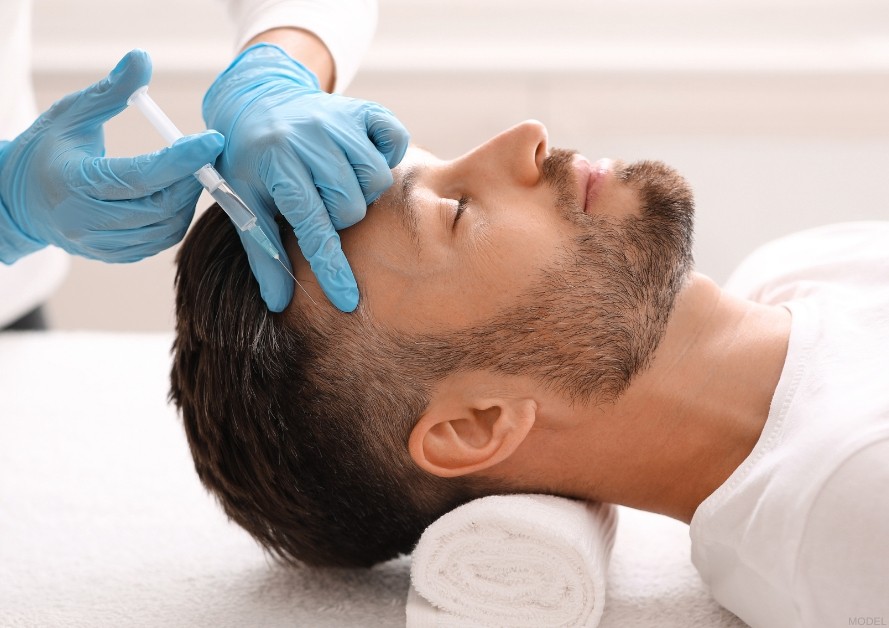When searching for the best hair loss treatment, it’s easy to get overwhelmed by the sheer number of products and promises out there. From shampoos and serums to surgical transplants, the options are endless—but not all are effective.
If you’re navigating this journey, it’s critical to separate the proven solutions from the overhyped gimmicks and choose a treatment tailored to your needs, goals, and hair loss pattern. Let’s explore your options below.
What Really Works for Hair Loss?
Hair loss looks different for everyone. Men often experience a receding hairline or thinning crown, while women may notice diffuse thinning or widening parts. Understanding the root cause of your hair loss—whether genetic, hormonal, or environmental—is the first step toward an effective solution. Here’s a breakdown of the most effective treatments for long-term hair restoration.
1. FUE Hair Transplant (Follicular Unit Extraction)
An FUE hair transplant is one of the most advanced, minimally invasive surgical solutions for hair restoration. It involves harvesting individual follicular units from the back or sides of the scalp and transplanting them to areas of thinning or baldness. Best of all, FUE graft survival is high (often between 85% and 95%) when performed by an experienced surgeon.
With no linear scar and a shorter recovery time than traditional methods, FUE is ideal for patients who want natural-looking results and minimal scarring, even in high-exposure areas (short hairstyles, shaved heads, and so on).
2. FUT (Follicular Unit Transplantation)
FUT is another proven surgical approach that involves removing a thin strip of scalp from the donor area and dissecting it into individual grafts. Though it may leave a linear scar, FUT often yields more grafts per session and can be more cost-effective. It’s especially suitable for patients with more extensive hair loss.
Learn more about the differences between FUE and FUT.
What Doesn’t Work (At Least Not Well)
With hair loss comes a flurry of miracle cures that don’t live up to the hype. Here are a few that often underdeliver:
- Over-the-counter shampoos and supplements: While FDA-approved topical medications like minoxidil can slow or partially reverse hair thinning, many shampoos, supplements, and natural remedies lack strong evidence for regrowth, especially in advanced hair loss.
- Laser combs and caps: Low-level laser therapy has shown mild benefits for some, but results are often modest and inconsistent.
- Scalp massages and oils: These may improve circulation but are unlikely to have a meaningful effect on hair regrowth without being part of a broader treatment plan.
If you’re wondering, “What is the best hair loss treatment for men?” or “What’s the best treatment for hair loss in women?”, you won’t find the answer in a bottle alone—it requires a strategic, often multi-modal plan tailored to you.
Choosing the Right Treatment for Your Hair Loss Pattern & Lifestyle
Not all treatments are right for every person. The best approach depends on several factors:

Type of hair loss: Is it hereditary, hormonal, or stress-related?
Extent of hair loss: Is your hair thinning evenly, or are there defined bald spots?
Age and gender: Male pattern baldness and female pattern thinning require different approaches.
Lifestyle and preferences: Are you open to surgery? Do you want a solution with minimal downtime?
Consulting with our board-certified facial plastic surgeons who specialize in advanced hair restoration at our Charlotte, NC, practice ensures you get an accurate evaluation and a personalized treatment plan.
How To Vet Hair Restoration Providers in Charlotte
With so many local providers offering hair transplant and restoration, how do you know who to trust? Use the following tips to vet your options:
- Check credentials: Choose a board-certified facial plastic surgeon or dermatologist with extensive experience in hair restoration.
- Ask to see real results: Before-and-after photos of actual patients—not stock images—are a must.
- Avoid hard sells: Be wary of clinics that push aggressive sales tactics or guarantee unrealistic results.
- Read reviews: Patient testimonials and verified reviews can provide valuable insight into the experience and results you can expect.
Set Realistic Expectations & Plan for the Long Term
No hair restoration treatment—surgical or nonsurgical—delivers instant miracles. In the case of FUE and FUT, it may take several months before the newly transplanted hair begins to grow. Patience and long-term commitment are key.
It may be helpful to keep the following in mind:
- Results take time: It can take 6 to 12 months to see the full impact of a hair transplant as the new hair gradually grows in and thickens.
- Additional treatments may be needed: While FUE and FUT offer permanent results in the transplanted areas, we may recommend future sessions if hair loss progresses in untreated zones or if you’re looking to improve overall density.
- Combination therapies often work best: Supporting your transplant with topical treatments like minoxidil can enhance regrowth and preserve existing hair. You may need to pause minoxidil briefly before and after surgery to avoid irritating the healing scalp.
Ready To Take the Next Step?
If you’re looking for a hair loss treatment that works, look no further than the expertise of our double board-certified facial plastic surgeons. We will help you explore your options and create a custom plan for your needs.
To get started, request a consultation or call us at (980) 949-6544.







Leave a Reply